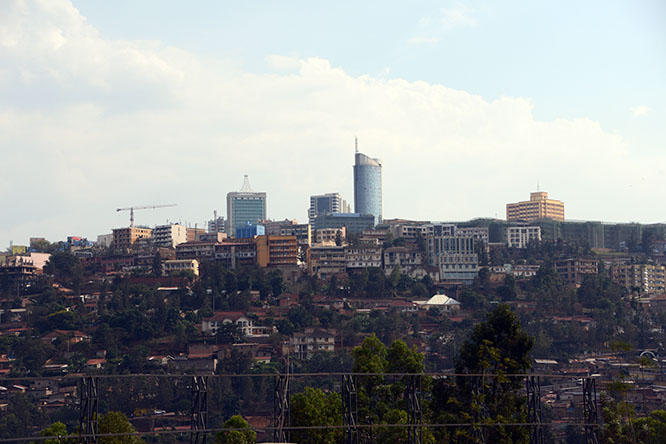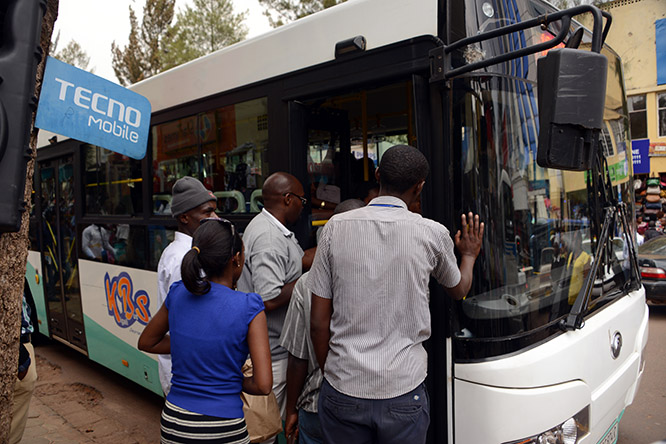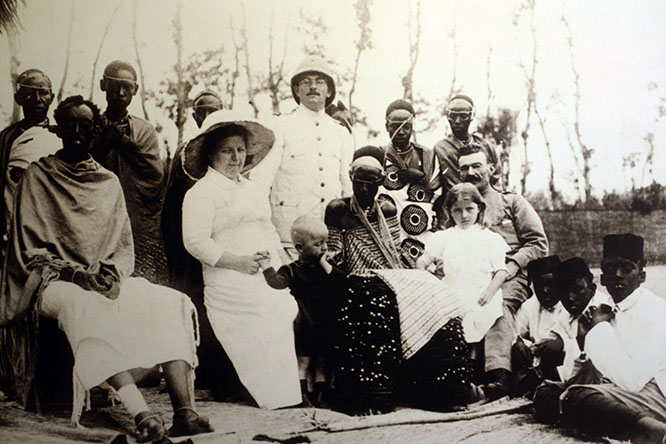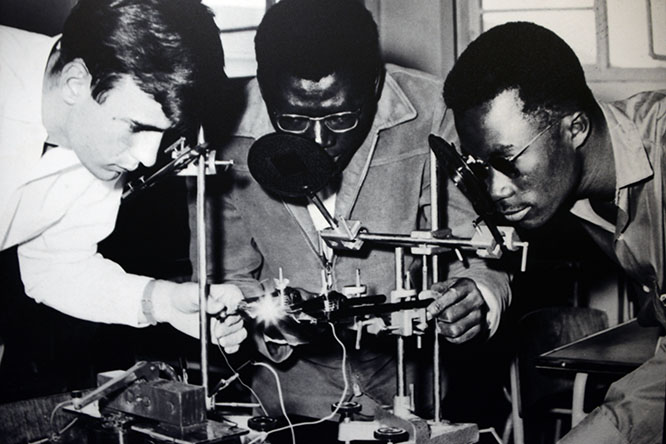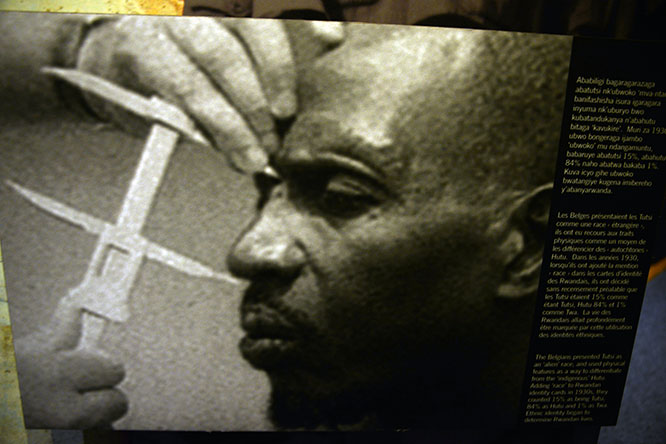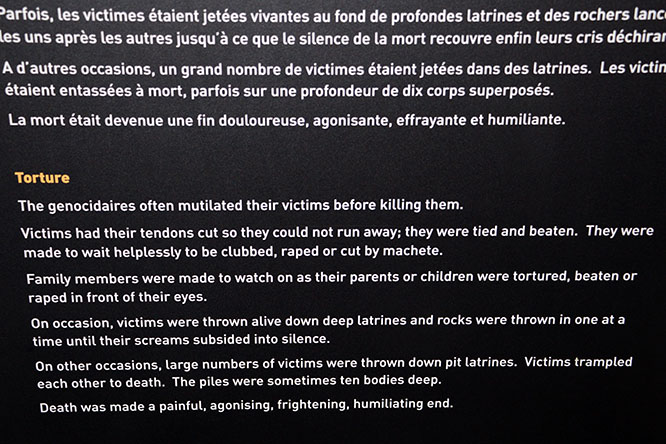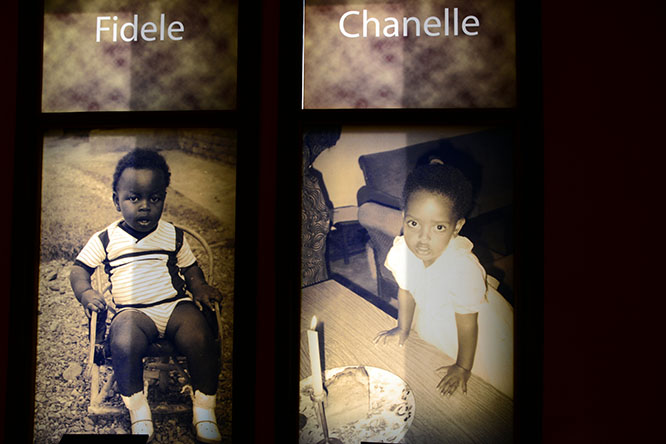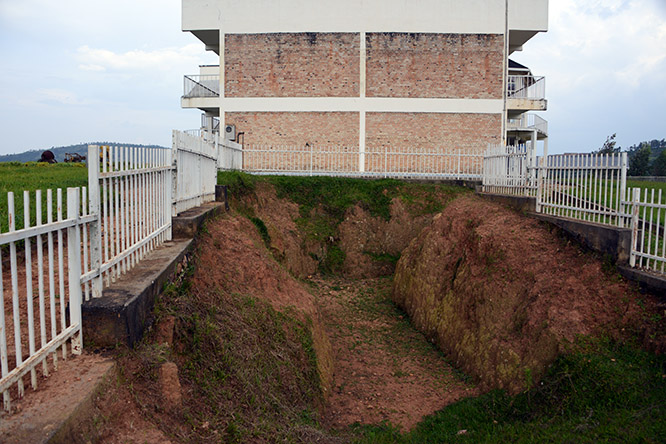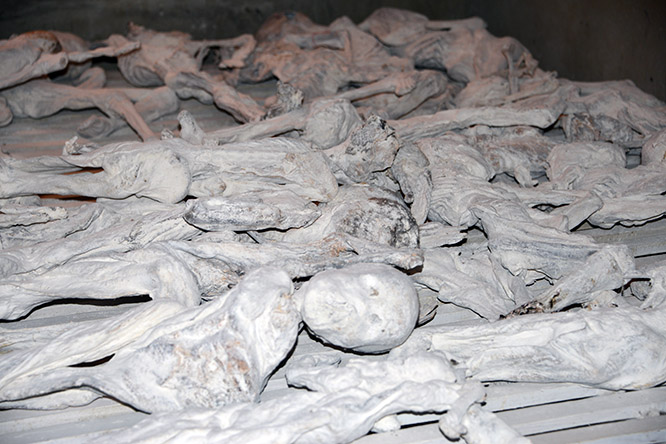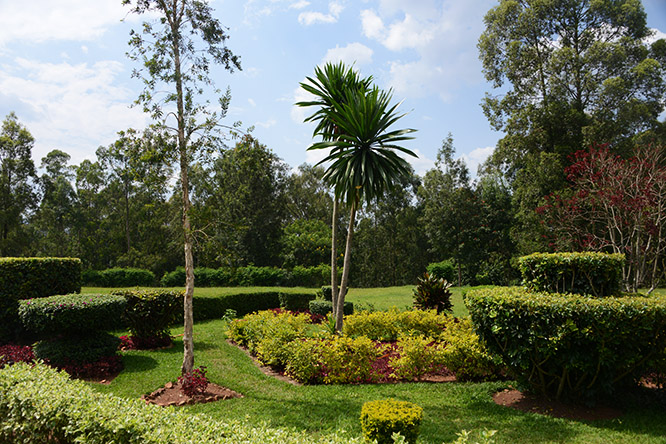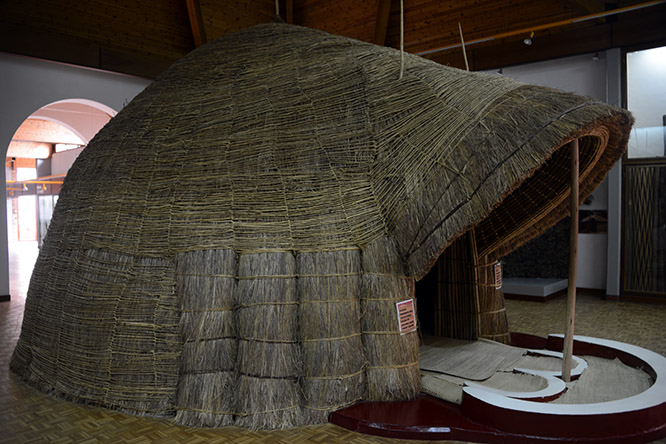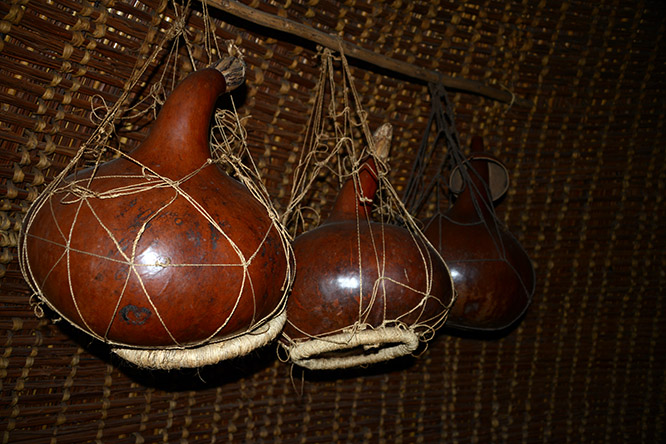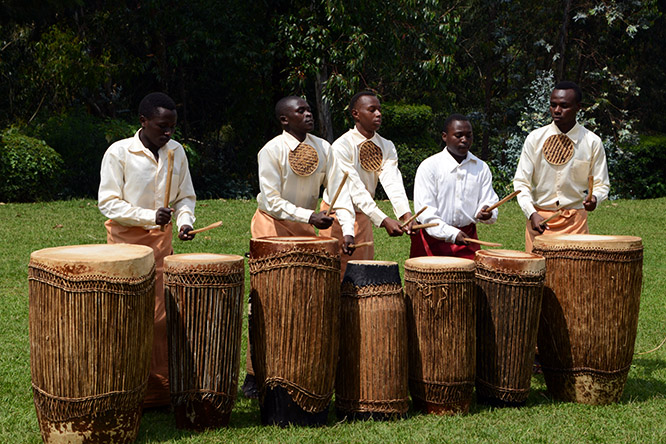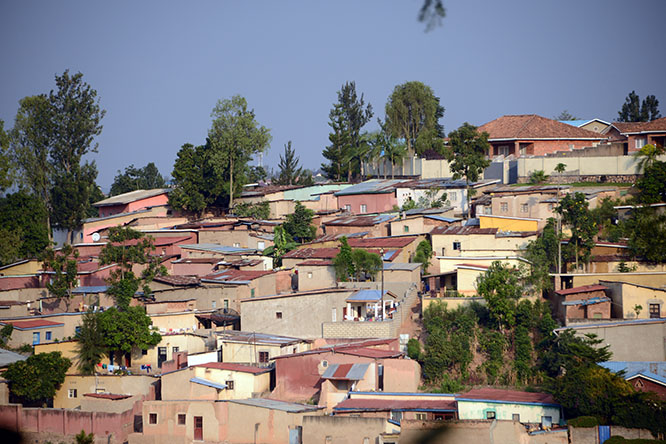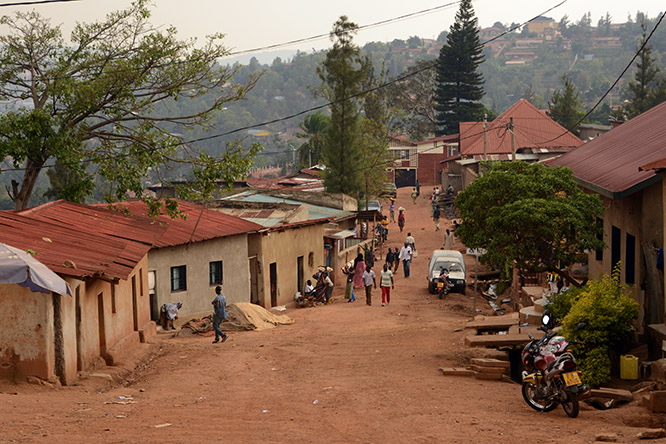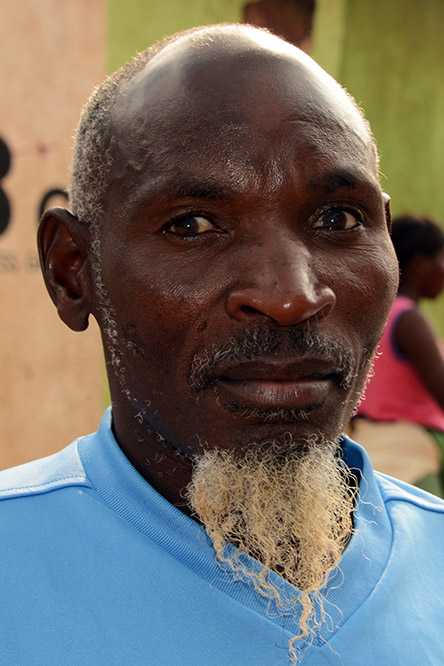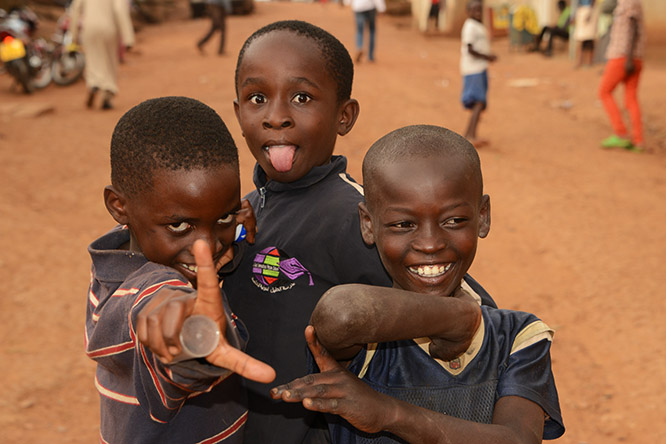Visiting Kigali
Before I get into how awesome Kigali is, I have to start off and complain about how I lost my hard drive with all my Rwanda photos on it! Now I paid an arm and a leg and got about 30% of them restored but sadly I’m putting up this page with a lot of content missing forever, or at least until I revisit again! For some reason mostly my photos from the museums seemed to survive while pretty much everything else was lost. So here I’m starting off with just a few photos that show downtown Kigali. The photo above shows the city center of Kigali, a population of about 600,000 people. It’s truly a nice city and it’s amazing how much it has recovered from the civil war. I had some great photos of the modern districts that were well kept with no litter around, and lots of new buildings and beautiful gardens.
I could fill up this entire page and complain about the photos I lost but I’ll have to let it go. One of them was some of the downtown areas that showed how nice the city was and some of the new modern buildings they have. Despite all the challenges that Kigali had to overcome, I found it to be one of the nicest cities I’ve been to in Africa. There were lots of modern areas if you’re missing anything from the western life, and the city is also very safe now. I took public transportation a few times because it’s so convenient and cheap.
Rwanda is most known for their genocide and civil war in the 1990’s. The story is one that interests people around the world, especially someone like me since I was in high school when the events took place. The best way to learn about it is through the museums in Kigali. The museums are brutally honest and to the point, and at times difficult. The story of the Rwandan genocide begins with the Belgian colonists who came to the country in the 1920’s, and later were the catalyst for the civil war.
Rwanda has several ethnic groups, but the main ones are the Hutu and Tutsi. They lived together for centuries without any troubles, and thought little of their differences. As a foreigner you’re not likely to be able to point out the different ethnic groups, but for those that live here they often tell me certain features such as their nose or height is how to tell the Hutu and Tutsi apart. When the Belgians arrived they determined that the Tutsi were superior and gave them preferential treatment. The Tutsi of course welcomed this, and began taking more active roles in Belgian colony’s government. They were given better jobs, education, and other benefits while the Hutu’s became secondary citizens. Above shows an early photo of some Belgians giving instructions to a Tutsi. The photo below shows Belgians taking a measurement of a Hutu man’s nose.
Of course the details of the genocide and events that led to it are a very long story, and there are countless books and documentaries covering the subject. Knowing how the Tutsi and Hutu’s were separated early on makes it easy to see how tensions could rise, and after decades it finally turned into acts of violence. One day the Hutu’s rage boiled over into gruesome attacks against the Tutsi’s. Hutu’s banded together into militias and killed all Tutsi’s they could find, regardless of age or gender. Hundreds of thousands died, and many times in terrible ways. The photo above from the museum details some of the atrocities.
The most depressing part of the museum had a section dedicated to young kids who had become victims during the genocide. They had even personalized their stories to tell what the kids had enjoyed doing for fun in their short life and how they died. For example Fidele on the left was executed by a gun, while Chanelle was dismembered by a machete.
One of the largest memorials is found outside Kigali in Butare, where some of the most brutal acts were carried out. Victims had fled to a church only to be surrounded by Hutu militia. The militia attacked the church with grenades and firearms. Those who ran out of the church were slaughtered on the spot, and those that stayed inside were all eventually killed. It’s estimated that possibly thousands of people were murdered at the church. The pit above shows a mass grave that was dug for the victims. Many of them were preserved and are forever on display in the memorial. Below shows the remains of kids who were murdered in Butare.
It’s going to be along time before the stories of the genocide become distant memories and then history. While they can certainly make travel here difficult knowing all that has recently taken place, it’s at least reassuring to know how things have turned out just a few decades later. The other parts of the museum in Butare have some nice gardens on display and cultural exhibits.
The museum here had lots of good artifacts on display from different periods of Rwandan history. There were traditional drums, ancient weapons, and lots of huts and handcrafts on display. This reconstructed hut above is typical of what you’ll see in most of the continent. Outside on the museum grounds they had some larger ones that had the handcrafts below that I had photographed. These were all locally made and are for sale, and I purchased some as souvenirs.
While I was at the last museum, some Rwandans were putting a show on that included these drummers above and local dancers. The dancers were all females and were too camera shy to have their photo taken, but these guys above didn’t mind. I’ve not heard much about Rwandan drummers, but in neighboring Burundi traditional drummers are the heart of the culture. With that said I’m sure it plays an important role in Rwanda as well.
So outside of the museums I had a great experience with a local going through some of the random parts of the city. This is one of those places I wouldn’t have likely visited on my own, but someone I met was more than happy to show me around. Sadly nearly all my good photos from here were lost. It’s a pretty lively area, with lots of markets, traffic, and locals going about their business. This photo above shows what some of the typical houses in Rwanda look like. Below is the entrance to one of the neighborhoods in a quieter section off the main street.
This man I randomly met here while walking around. While he didn’t speak any English, I understood his gesture when he pointed to my camera and tried to warn me to be careful. Everyone loves shots of kids, and I’m glad that I didn’t lose this photo below! So while most of my Kigali photos were lost, I can only describe how well this country has moved forward. Billboards around the city remind citizens the importance of education and working together as a nation. It’s really a great city and I’m I’ll return again!
